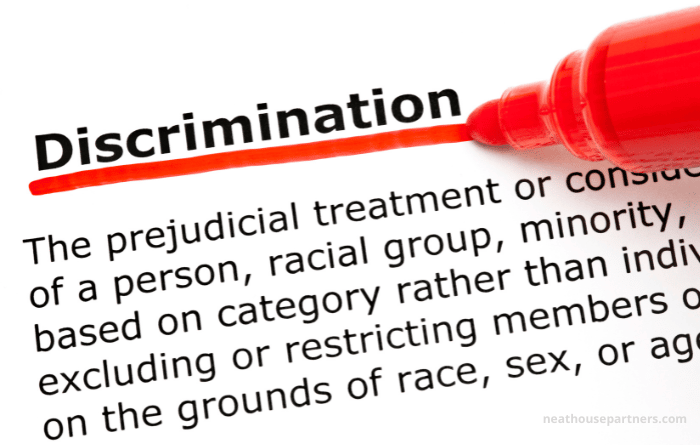With a rising number of discrimination cases being brought to employment tribunals and publicised in the media, it’s more important than ever that employers take action that shows they are doing all that they can both protect employees from discrimination in the first place and prevent claims being made against them.
The by-product of taking this kind of proactive stance will be that employers are more likely to be able to meet the high threshold set by Employment Tribunals and The Court of Appeal when relying on the statutory defence against discrimination claims.
Read on to understand when you can use the statutory defence against discrimination claims, what it is, and how it can help you when faced with employee tribunal action.
What Is Statutory Defence?
When defending a discrimination claim in an employment tribunal, it is common for employers to rely on ‘statutory defence’.
Statutory defence is known as Section 109(4) of the Equality Act 2010.
It provides a defence for employers facing a claim for unlawful discrimination at employment tribunals but only applies where the employer can demonstrate that it took all reasonable steps to prevent the perpetrator from committing the discriminatory acts alleged.
Such steps could, for example, include providing staff with training relating to equal opportunities in the workplace.
When Can Discrimination Claims Be Made?
Discrimination claims can be made when an employee feels that he or she has been treated unfairly or harassed due to personal characteristics they possess.
The Equality Act 2010 lists nine protected characteristics: age, disability, gender reassignment, marriage and civil partnership, pregnancy and maternity, race, religion or belief, sex (including sexual orientation), and sexual harassment.
These are the personal characteristics that the discrimination law protects against.
The law covers discrimination in employment, including recruitment, terms and conditions, pay and benefits, promotion and transfer opportunities, training, dismissal and redundancy, or any other situation where an individual is being treated differently than others as a result of a protected characteristic.
When Can You Use Statutory Defence
If you have been taken to an employment tribunal by an employee on the grounds of discrimination, then you can use the statutory defence if you can show that you have taken reasonable steps to prevent the alleged discriminatory acts from occurring in the first place.
What Are Reasonable Steps?
It will ultimately be up to the courts to decide what is considered a reasonable step, but when relying on this defence, it’s the employers should consider if the following points apply to meet the high threshold set by section 109;
- Can you identify steps that have been taken?
- Were the steps reasonable?
- Should any further steps have been reasonably taken?
Relevant factors as to whether steps are reasonable to include:
- Effectiveness, but this is not the sole factor. Note though, that a reasonable step is not only those that are more likely than not to prevent discrimination.
- The time, effort, expense and other practicalities required.
- The length and thoroughness of any training.
- Whether discrimination occurs after the steps had been taken.
- How employees react to reports of discrimination once raised.
- Whether refresher training has been given and when this occurred.
A key issue in another Court of Appeal ruling on discrimination was that the relevance of the effectiveness should be considered too;
“In considering what steps are reasonable in the circumstances, it is legitimate to consider the effect they are likely to have. Steps which require time, trouble and expense, and which may be counterproductive given an agreed low-key approach, may not be reasonable steps if, on an assessment, they are likely to achieve little or nothing.”
This means that if an employer wants to rely on section 109(4) defence and contests the requirement that further steps could have been taken because they would have been likely to be ineffective, or not required, then it is their duty to present this defence fully.
When Does The Statutory Defence Work?
The statutory defence is not a catch-all defence for employers facing discrimination claims, as does have its limits.
This was shown by the outcome of the Allay UK Ltd v Gehlen case in 2017 which is briefly outlined below.
Following an employee dismissal in 2017, the ex-employee, who was of Indian origin, claimed they had been racially harassed by another employee during their employment and brought a claim of race discrimination and harassment to an employment tribunal.
The claims were upheld, and the harasser was ordered to take additional equality and diversity training.
Whilst the employer tried to rely on statutory defence in their appeal, stating that they had taken steps to provide equality and diversity training to employees concerned, the employment tribunal found that the training had taken place two years before the alleged harassment and therefore had become stale.
The judgement was therefore made that a reasonable step for respondents to have taken to rely on the statutory defence given would have been to provide staff with refresher training.
This case is a useful reminder to employers not only of how high the threshold for establishing the statutory defence is but also of the importance of regularly reviewing and updating policies and training provisions.
Protecting Yourself From Discrimination Claims
As an employer, you have a duty to keep your staff safe, free from harassment and in a discrimination-free place of work and should be proactive in the steps that you take to ensure this is true.
Examples of activities that can be taken include delivering high-quality training that staff understand and ensuring the training is refreshed and updated when needed.
A secondary beneficial outcome of preventing discrimination from occurring in the first place is that the steps taken to combat discrimination in the workplace will help employers should they ever be faced with a discrimination claim and want to rely on the s.109(4) statutory defence.
The Gehlen case reminds us that It is not simply enough that some reasonable steps have been taken, but “all reasonable steps” need to have been considered and delivered if considered effective to do so.
The case, therefore, reinforces this high threshold that employers need to meet when taking significant and effective action to combat discrimination in the workplace and claims of discrimination being brought against them.
Summary
Section 109(4) of the Equality Act 2010 is designed to encourage employers to take proactive steps aimed at effectively combatting discrimination in the workplace.
What constitutes reasonable steps is the discretion of Employment tribunal judges when employers rely on this defence in discrimination claims.
As the defence has an upper threshold that limits how far the defence can be relied upon, employers should ensure that training on relevant matters is effective, refreshed regularly and any actions taken to combat discrimination in their workplace are shared with staff and regularly reviewed
There are plenty of positive steps that you can take against discrimination in the workplace covering recruitment, contracts, promotion, working arrangements and beyond.







